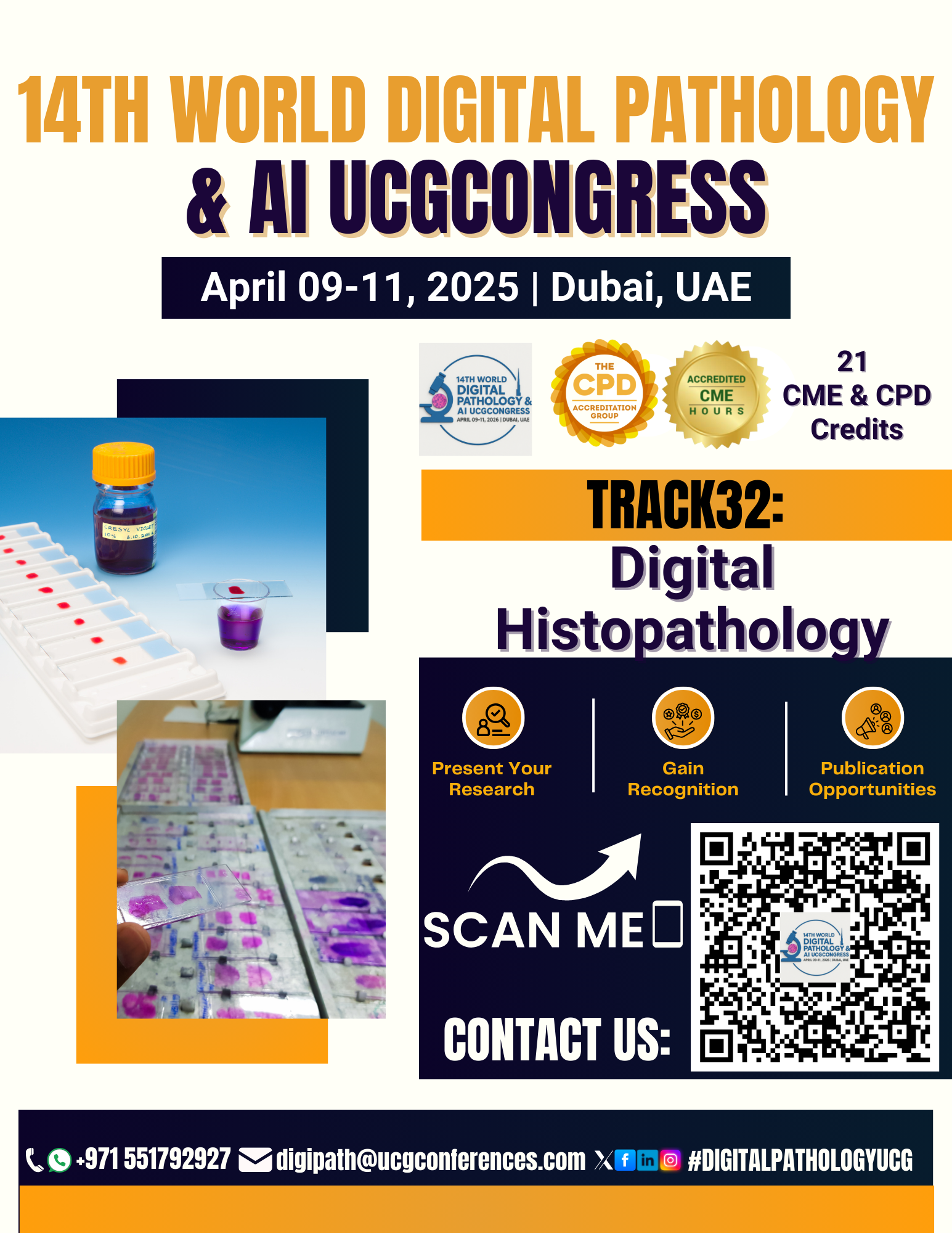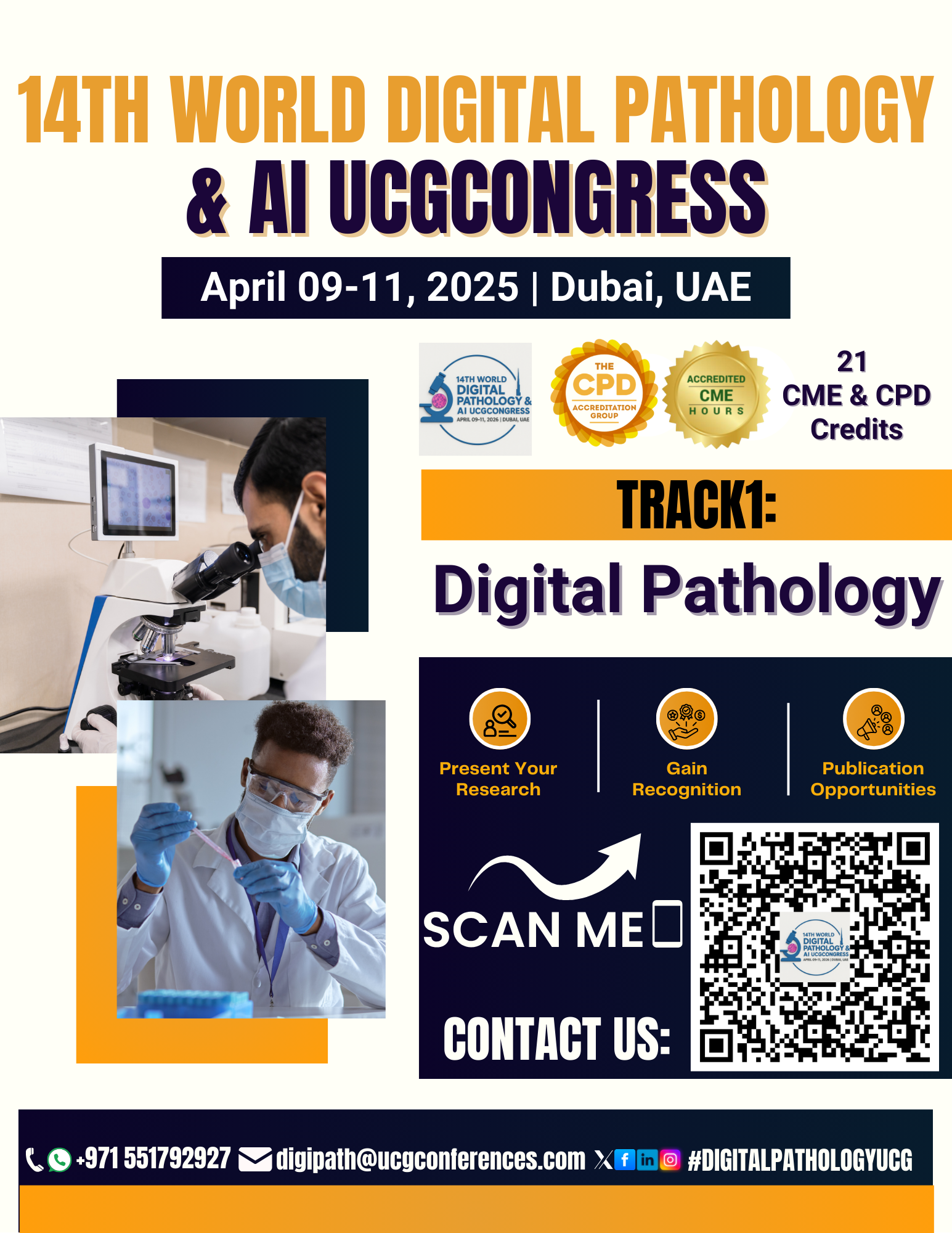



Sub track:-
Enhanced Image Quality Quantitative Analysis, Faster Turnaround Times,...

Sub track:-
Integration of Imaging Modalities, Advanced Image...

Sub track:
Digital Histopathology refers to the application of digital technology
to the practice of histopathology, which involves the study and diagnosis of
tissue samples to identify diseases. Digital histopathology enhances
traditional histopathology by converting tissue slides into digital formats,
enabling advanced analysis, remote consultations, and improved workflow
efficiency. Here’s a detailed overview of digital histopathology:
1. Core Concepts of Digital Histopathology
a. Whole Slide Imaging (WSI)
Definition: Whole Slide Imaging involves scanning entire
glass slides of tissue samples to create high-resolution digital images.
Technology: Uses specialized scanners to capture detailed,
high-resolution images of stained tissue sections.
Benefits: Allows for virtual examination of slides, storage
of digital images, and easy sharing among pathologists and researchers.
b. Digital Pathology Platforms
Software: Digital pathology platforms include software for
viewing, annotating, and analyzing digital images of tissue slides.
Features: Includes tools for image manipulation,
measurement, and integration with electronic health records (EHRs).
c. Image Analysis and Artificial Intelligence
Automated Analysis: Uses algorithms and machine learning
models to analyze digital images, identifying patterns and anomalies.
AI Integration: AI and machine learning assist in tasks such
as tumor detection, grading, and quantification of biomarkers.
2. Applications of Digital Histopathology
a. Diagnostic Pathology
Remote Diagnosis: Enables pathologists to review and
diagnose tissue samples remotely, facilitating access to expertise and second
opinions.
Consultations: Supports telepathology for consultations
between pathologists and other healthcare providers.
b. Education and Training
Teaching Tools: Provides virtual slide collections and case
studies for medical education and training purposes.
Simulation: Allows for interactive learning and simulation
of various pathology cases.
c. Research and Development
Data Sharing: Facilitates the sharing of digital images and
data among researchers for collaborative studies and data analysis.
Biomarker Discovery: Supports research into new biomarkers
and disease mechanisms through detailed image analysis.
d. Personalized Medicine
Tailored Treatment: Enhances the ability to analyze
patient-specific tissue samples for personalized treatment strategies and
precision medicine.